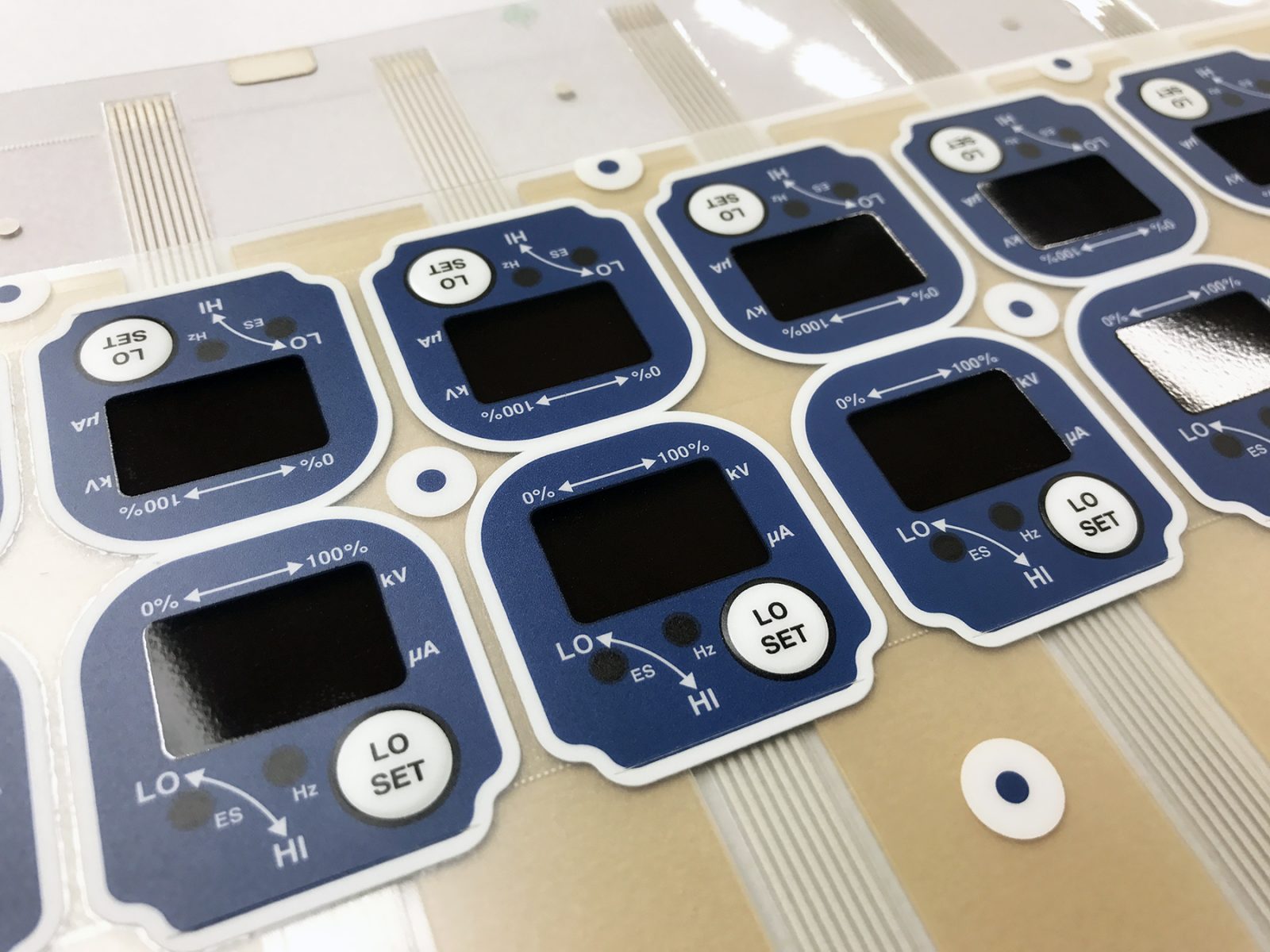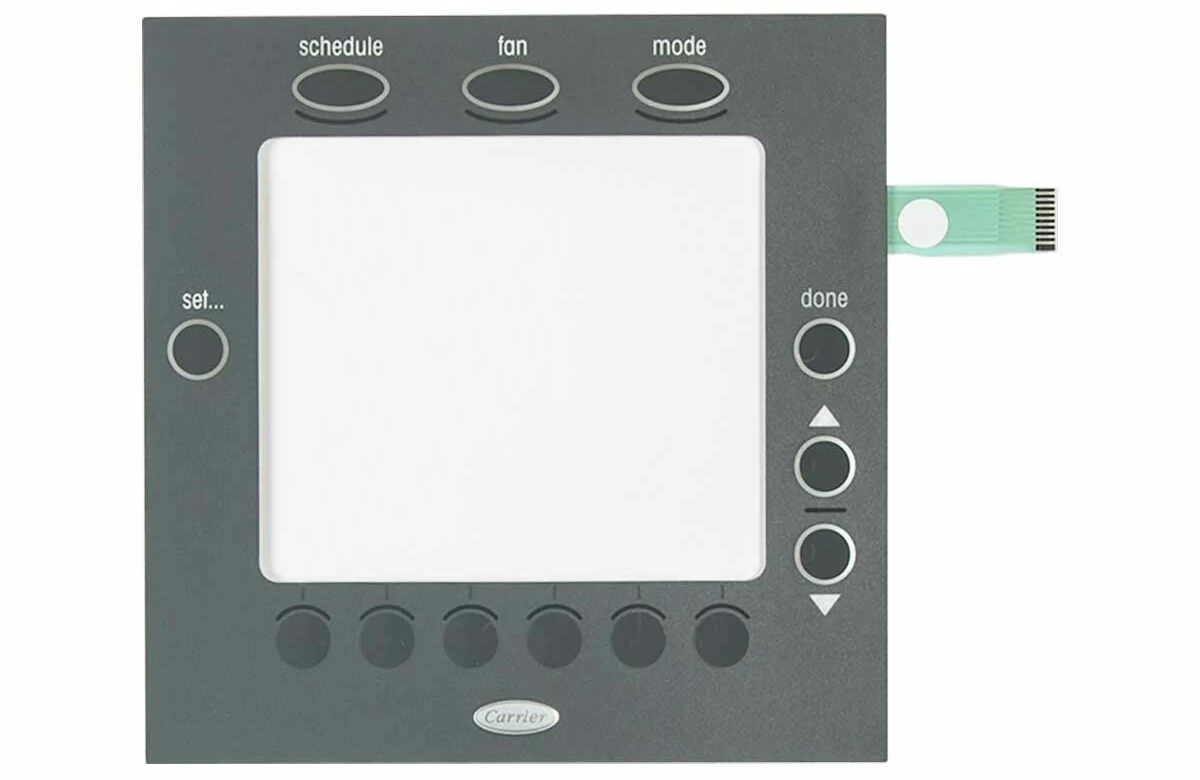Comprehending the Relevance of Membrane Switches in Interface
Membrane switches are integral components in the style of reliable individual interfaces, facilitating not just functionality but also enhancing aesthetic charm and individual interaction. As we check out the different advantages and future patterns associated with Membrane innovation, it comes to be clear that these buttons are more than just parts; they represent a merging of innovation and practicality.
What Are Membrane Switches?

The spacer layer, which has adhesive residential or commercial properties, enables for the splitting up of the circuit layer from the overlay, ensuring that the button remains in a non-activated state until pushed. When pressure is put on the overlay, it presses the spacer layer, linking the space and finishing the circuit in the underlying layer. This design not just lowers the physical room needed for typical mechanical buttons but likewise boosts the resilience of the tool, as Membrane switches are normally immune to dust, dampness, and various other environmental factors.
Frequently discovered in applications varying from customer electronics to clinical devices, Membrane switches are essential to modern technology, supplying a reliable and user-friendly interface that straightens with modern layout requirements.
Advantages of Membrane Buttons
While various switch technologies exist, Membrane Switches deal unique advantages that make them particularly desirable in various applications. One of the key benefits of Membrane buttons is their portable layout, which enables for space-saving implementations in tools where realty is limited. Their slim profile not just boosts visual allure however likewise promotes light-weight building and construction.
An additional considerable advantage is their resistance to ecological variables. Membrane switches are generally sealed against dampness, dust, and contaminants, making them optimal for use popular environments, such as medical tools and commercial tools. This longevity prolongs the life-span of the switch, reducing upkeep costs and boosting integrity.
In addition, Membrane buttons can be tailored to meet certain layout requirements, integrating distinct graphics and shades that boost individual interaction. Their tactile responses options can also be tailored to supply a satisfying user experience. Additionally, Membrane buttons are cost-effective, especially in high-volume applications, as they can be created effectively.
Applications in Different Industries

In the consumer electronic devices market, Membrane switches prevail in devices such as microwaves, cleaning machines, and remote controls. Their tactile feedback and aesthetic alternatives enhance user experience while giving a sleek, modern-day appearance. Furthermore, auto suppliers use Membrane switches in dashboard controls and find out here now infomercial systems, where area is limited, and individual interaction is important.
Furthermore, the industrial industry leverages Membrane switches in control panels for machinery and tools, permitting intuitive operation in usually severe settings. Their resistance to chemicals and wetness ensures long life and reliability in these applications. In general, the flexibility of Membrane Switches contributes considerably to their widespread use, making them vital in various technological domain names.
Design Factors To Consider for Membrane Switches

When making Membrane switches, numerous key considerations should be considered to make sure optimal performance and individual experience. Firstly, the choice of materials is important; selecting durable, high-grade substrates can enhance the button's durability and resistance to ecological aspects such as wetness and temperature level fluctuations.
Second of all, the style of the graphic overlay need to focus on clearness and ease of usage. Symbols and text need to be understandable, and the design should facilitate user-friendly communication (membrane switches). In addition, tactile responses is essential; integrating a responsive dome or various other systems can improve the user experience by giving physical confirmation of activation
One more vital aspect is the switch's electrical performance. Developers should make sure that the conductive traces are correctly designed to minimize resistance and stay clear of signal interference. This involves evaluating the needed actuation pressure and making sure compatibility with the digital components they will certainly interface with.

Future Trends in Membrane Modern Technology
As innovation proceeds to breakthrough, Membrane switches are positioned to develop significantly, driven by advancements in materials and making strategies. One arising fad is the incorporation of advanced products, such as adaptable substrates and conductive inks, which enhance resilience and reduce the general weight of Membrane buttons. These materials not just boost the responsive action but also enable the design of switches that can endure harsher ecological problems.
Furthermore, the assimilation of touch-sensitive modern technologies is transforming traditional Membrane Switches right into more interactive interface. Capacitive touch sensors installed within Membrane switch panels can provide a more responsive and intuitive customer experience, lining up with the growing need for streamlined, modern styles in customer electronic devices.
Additionally, innovations in printing strategies, such as digital and 3D printing, make it straight from the source possible for fast prototyping and modification of Membrane buttons. This flexibility permits producers to react quicker to market demands and consumer preferences.
Finally, sustainability is coming to be a significant emphasis, with manufacturers checking out environment-friendly products and procedures. As these trends unravel, the future of Membrane innovation assures boosted performance, visual charm, and ecological duty, solidifying their role in innovative individual interfaces throughout different sectors.
Verdict
To conclude, Membrane Switches represent a vital component in the style of customer interfaces, incorporating functionality with aesthetic flexibility. Their benefits, consisting of durability and resistance to ecological elements, make them ideal for diverse applications throughout different sectors. Thoughtful layout considerations boost user communication and experience. As advancements in technology continue, the development of Membrane buttons is anticipated to further refine interface, driving advancement and enhancing use in an increasingly complex technical landscape.
Membrane switches are important components in the layout of reliable customer interfaces, facilitating not only functionality however likewise improving visual charm and individual communication.Membrane Switches serve as an important component in different individual interfaces, helping with a smooth interaction in between customers and electronic gadgets.While various button innovations exist, Membrane Switches offer unique advantages that make them specifically desirable in various applications.Moreover, Membrane buttons can be customized to satisfy certain layout demands, including one-of-a-kind graphics and colors that improve customer communication.In final thought, Membrane Switches stand for a crucial component in the style of user interfaces, incorporating capability with aesthetic adaptability.